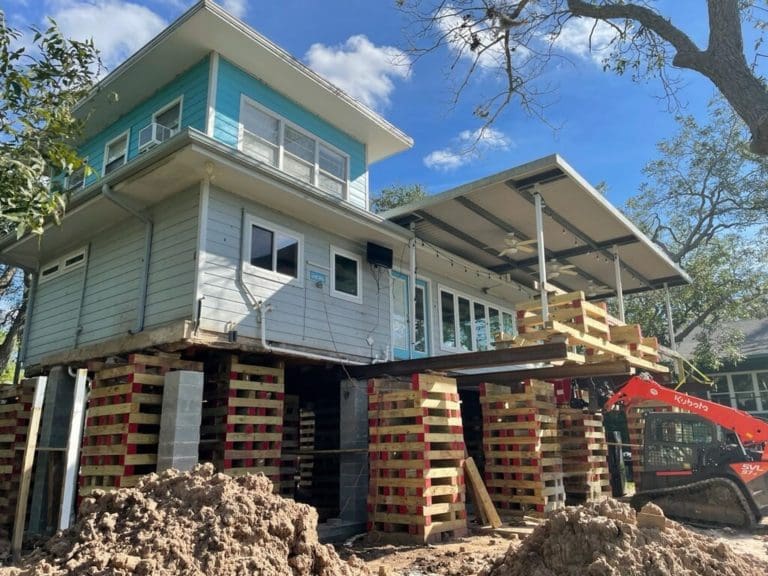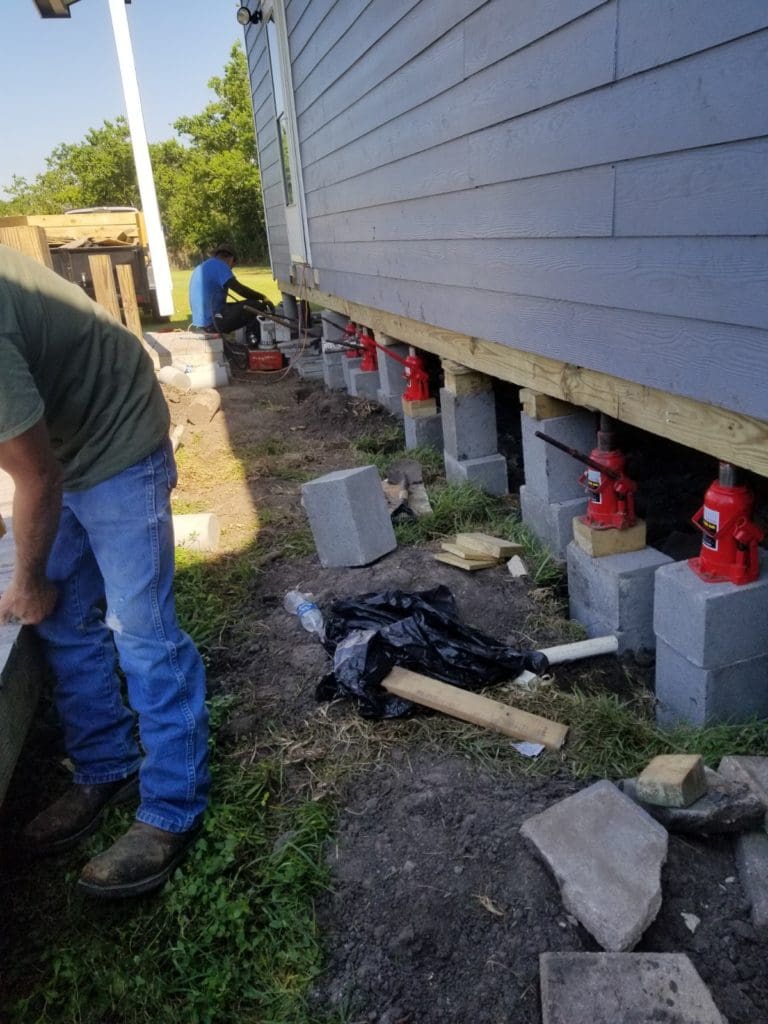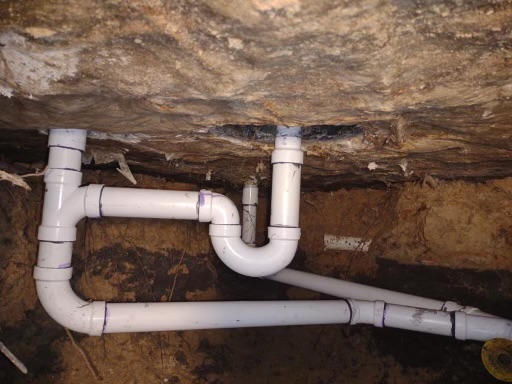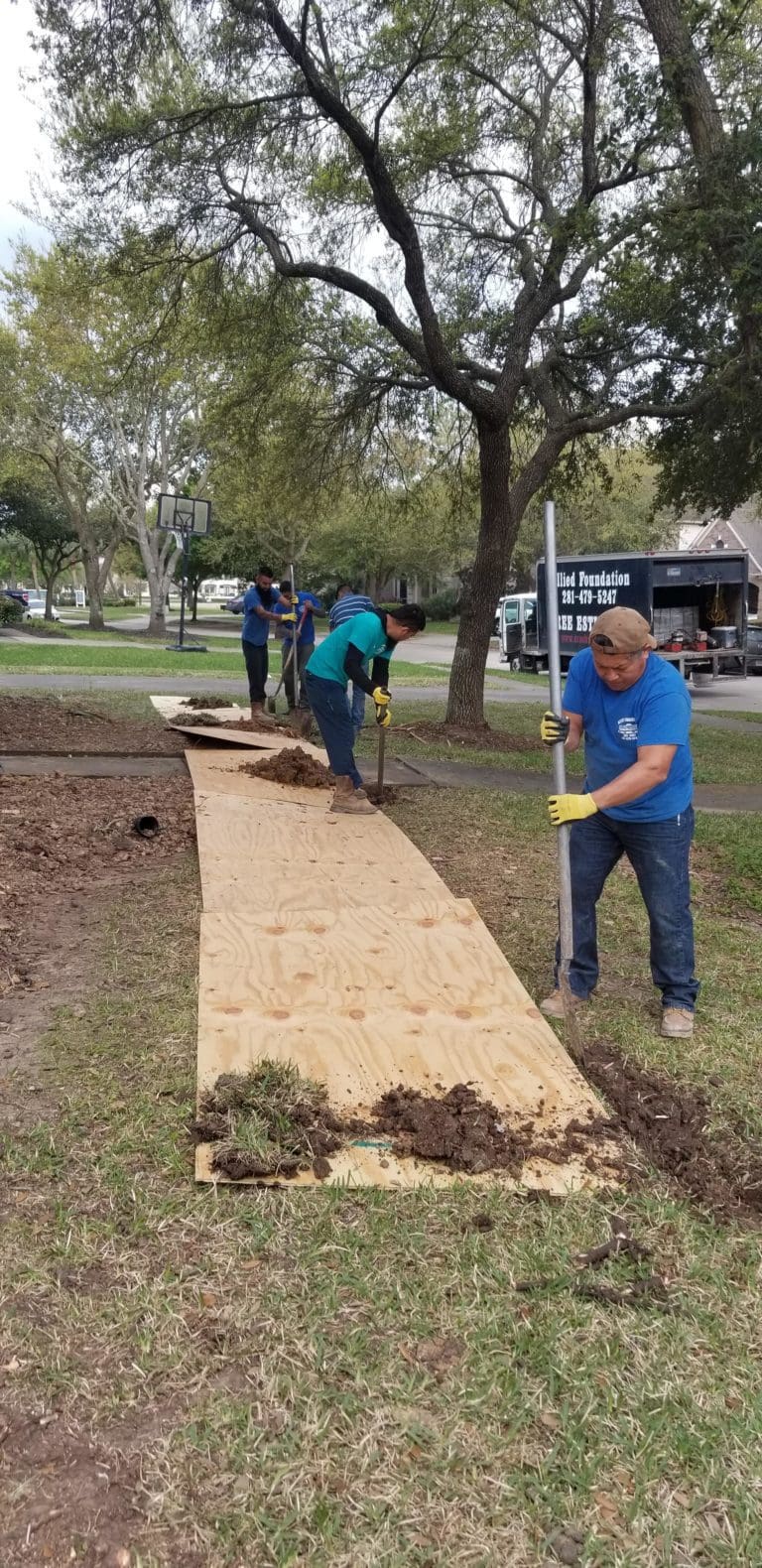Frequently Asked Questions
How to fix foundation drainage?
Fixing foundation drainage involves addressing water accumulation around your home's foundation. Ensure proper grading of landscaping, install gutters and downspouts that direct water away, and consider a drainage system like French drains to manage excess moisture effectively.
How much does a foundation drainage system cost?
The cost of a foundation drainage system varies, typically ranging from $1,500 to $5,000, depending on the home's size and specific drainage requirements. For an accurate estimate, it's best to consult with a professional.
What is the average cost for foundation repair?
The average cost for foundation repair typically ranges from $2,000 to $7,000, depending on the extent of damage and the specific repair methods required. It's best to request a complimentary estimate for a more accurate assessment tailored to your home.
How much does it cost to fix a foundation leak?
The cost to fix a foundation leak varies widely based on the severity of the issue and the repair methods required. Typically, homeowners can expect to pay between $500 to $3,000 for repairs, with more extensive damage leading to higher costs.
What methods improve foundation drainage effectiveness?
Effective methods to improve foundation drainage include installing French drains, maintaining gutters and downspouts, and ensuring proper grading around the home to direct water away from the foundation. These strategies help prevent moisture buildup that can lead to foundation issues.
How to identify poor foundation drainage?
Identifying poor foundation drainage involves observing signs such as pooling water near the foundation, water stains on walls, or cracks in the foundation itself. Additionally, check for soggy soil around the base of your home, which indicates drainage issues.
What symptoms indicate foundation drainage issues?
Symptoms that indicate foundation drainage issues include cracks in walls, uneven floors, doors and windows that stick, and moisture accumulation in the basement or crawl space. Timely identification can prevent further foundation damage.
What causes foundation drainage problems?
Foundation drainage problems are caused by a combination of poor soil drainage, excessive rain, improper landscaping, and blocked gutters or downspouts. These factors lead to water accumulation around the foundation, increasing the risk of structural damage.
How can landscaping affect foundation drainage?
Landscaping can significantly impact foundation drainage by directing water away or towards the home. Properly designed landscapes with appropriate grading and drainage features help prevent water accumulation around the foundation, reducing the risk of moisture-related issues.
Are there DIY options for foundation drainage?
DIY options for foundation drainage include installing gutters, extending downspouts away from the foundation, and creating swales or trenches to redirect water. However, it's essential to ensure these methods effectively manage water flow to avoid future foundation issues.
What are signs of a damaged drainage system?
The signs of a damaged drainage system include pooled water around the foundation, persistent dampness in basements, mold growth, and overflowing gutters. These issues indicate that water is not being effectively channeled away from your home.
How often should foundation drainage be maintained?
Foundation drainage should be maintained regularly to ensure effective water management. It's recommended to inspect and clean drainage systems at least once a year, or more frequently during heavy rainfall seasons, to prevent foundation issues.
What materials are best for foundation drainage?
The best materials for foundation drainage include perforated pipes, gravel, and landscaping fabric. These materials effectively direct water away from the foundation, preventing moisture buildup and potential structural issues.
How to install a foundation drainage system?
Installing a foundation drainage system involves excavating a trench around the foundation, laying down perforated pipes to redirect water away from the structure, and covering them with gravel to ensure proper drainage and prevent water accumulation.
What are the benefits of proper foundation drainage?
The benefits of proper foundation drainage include enhanced home stability, reduced risk of water damage, and prevention of mold growth. Effective drainage systems manage soil moisture, protecting your foundation and ensuring a healthier living environment.
Can foundation drainage installation be a DIY project?
Foundation drainage installation can be a DIY project, but it is often complex and requires specific knowledge about grading, soil types, and local regulations. It's advisable to consult with professionals to ensure proper installation and optimal results.
What permits are needed for drainage repair?
Permits needed for drainage repair depend on local regulations. Typically, homeowners must obtain a permit for significant alterations to drainage systems to ensure compliance with safety and environmental standards. Always check with your local municipality for specific requirements.
Is trenching necessary for foundation drainage?
Trenching is often necessary for effective foundation drainage. It helps redirect excess water away from the foundation, reducing pressure on walls and preventing soil erosion, which can lead to costly damage.
How does poor drainage affect home value?
Poor drainage can significantly reduce home value by causing structural damage, leading to costly repairs and compromising the overall integrity of the property. Homebuyers often avoid homes with drainage issues, fearing the potential for further complications.
What are the risks of neglecting foundation drainage?
Neglecting foundation drainage can lead to severe risks, including water pooling around the foundation, increased soil moisture, and potential structural damage. This may result in costly repairs, foundation settling, and compromised home stability.
How do I assess my homes drainage needs?
Assessing your home's drainage needs involves observing areas where water pools during rain, checking downspouts for proper flow, and evaluating soil moisture levels around your foundation. Consulting a professional can provide tailored solutions for effective drainage.
What role does soil type play in drainage?
Soil type significantly impacts drainage. Different soil types, such as clay, sand, and loam, affect water retention and movement, influencing how quickly excess moisture drains away from the foundation, which is crucial for preventing structural issues.
Are there maintenance tips for foundation drainage?
Maintenance tips for foundation drainage include regularly clearing debris from gutters and downspouts, ensuring proper slope away from the foundation, and checking for any blockages in drainage systems to promote effective water flow and prevent soil saturation.
How to choose a foundation drainage contractor?
Choosing a foundation drainage contractor involves evaluating their experience, checking for licenses and insurance, reading customer reviews, and comparing quotes to ensure quality service and fair pricing. Prioritize contractors with proven expertise in drainage solutions to protect your home's foundation.
What is the lifespan of drainage systems?
The lifespan of drainage systems varies depending on materials and installation quality, typically lasting 30 to 50 years. Regular maintenance can further extend their effectiveness, ensuring reliable performance in managing moisture and protecting your foundation.
When to consider upgrading foundation drainage systems?
Upgrading foundation drainage systems should be considered when you notice recurring water pooling around your foundation, signs of moisture in your basement or crawl space, or if your current system is outdated or ineffective.
How can foundation drainage be improved in older homes?
Improving foundation drainage in older homes involves assessing and enhancing the existing drainage systems. Homeowners can install gutters, extend downspouts, and create proper grading around the foundation to ensure water is directed away from the structure.
What technology exists for monitoring foundation drainage?
Technology for monitoring foundation drainage includes moisture sensors, smart drainage systems, and digital water level indicators, which provide real-time data on soil moisture and drainage conditions, helping homeowners proactively address potential foundation issues.
How does rain impact foundation drainage systems?
Rain significantly affects foundation drainage systems by increasing soil moisture levels, which can lead to excess water pooling around the foundation. This can compromise the drainage system's effectiveness, potentially causing foundation issues if not properly managed.
What is the warranty on foundation drainage systems?
The warranty on foundation drainage systems typically covers workmanship and material defects for a period of 5 to 10 years, depending on the specific system and provider. For precise details, it's best to consult with the installation contractor.





